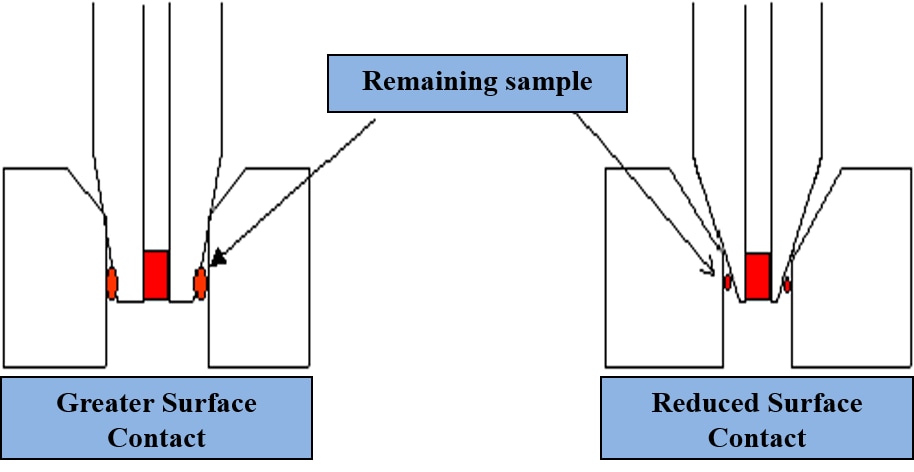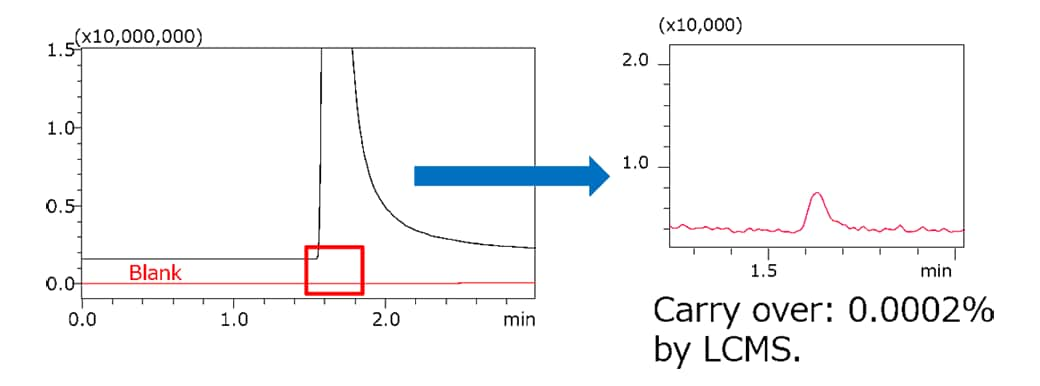Nexera Instrument Footprint
Nexera Carryover
Carryover occurs in HPLC when analyte from the previous injection is detectable in subsequent injections. It impacts the accuracy of results and reduces sample throughput by requiring time-consuming rinsing procedures or blank injections. It is of greater concern for users of LCMS instruments since the mass spectrometer is a very sensitive detector and can detect lower levels of carryover.
Carryover can be minimized in several ways, most commonly by using a needle rinse to wash the inside or outside of the needle between injections. The choice of rinse solution is a key question in method development since a poor rinse solution choice results in greater carryover and can even affect retention time and peak shape! More rinsing sounds like the optimal choice but also takes time, potentially reducing throughput in the case of rapid analysis.

Shimadzu’s Nexera LC-40 provides even better carryover performance than ever before. The SIL-40 autosampler’s design reduces carryover by minimizing contact between the platinum-coated needle and the injection port. The contact surface is a major source of carryover so minimal contact is best.
In addition, the SIL-40 autosampler can be equipped with an external needle shower and multiple internal rinse solutions for more sophisticated rinsing programs. By using rinse solutions with complimentary solubilities (i.e. acidic/basic, aqueous/organic) carryover is often reduced.

Contact Shimadzu to learn more about how the Nexera LC-40 reduces carryover to improve chromatography!



